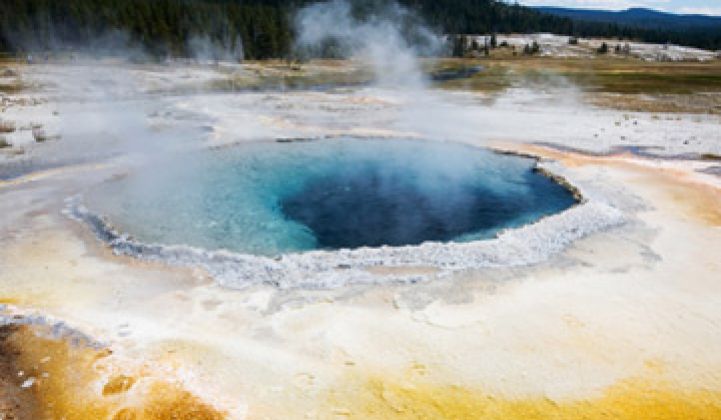Geothermal energy is arguably one of the best, and one of the most challenging, forms of renewable power available today.
First, the bright side. It’s an abundant, underutilized resource. Geothermal power essentially involves tapping subterranean pools of hot water, pumping it up to the surface and using the heat to make steam. The steam turns a turbine. Meanwhile, the water is sent thousands of feet back down into the earth to get reheated by the planet.
Rocks, water and a hole in the ground are the main ingredients. The Flintstones could almost have done it.
The U.S. has 3 gigawatts' worth of geothermal plants, mostly in Nevada and California, but we could add roughly 40 gigawatts more with known technologies. Technologies like enhanced geothermal -- which involve injecting water into dry wells -- could add another 100 gigawatts in the U.S. Geothermal wells are also -- or soon will be -- underway in Italy, Kenya, Turkey, Guatemala, Indonesia and Peru.
Geothermal also creates jobs, does little damage to the environment, and takes up relatively little real estate. The Peppermill Hotel and Casino in Reno gets 1 megawatt of heat from a 4,400-foot-deep well in its parking lot. It replaced four gas-burning water heaters and now saves $2.2 million in gas a year. The well head itself only takes up about one parking space.
“The thermal energy that gets removed is microscopic,” says Paul Thomsen, director of policy and business development at Ormat, which has 600 megawatts of capacity under contract with investor-owned utilities in the U.S.
Unfortunately, finding underground water is far more challenging than you might think. Only around one in ten wells hits a commercially viable hot spot. More often than not, drillers hit dry holes, or pools with water that’s only around 100 degrees: to produce electricity, developers need water at 300 degrees or higher. Promising wells can also peter out quickly.
Drilling a single well can cost $5 million to $8 million and developers may have to drill five or six successful wells before outside investors will jump into a project. Millions of dollars get spent before a single kilowatt gets produced. Developers are literally prospecting for heat.
Technology from the oil and gas industry -- seismic mapping tools, better drilling components -- could help bring the success rate up to 20 percent, or even 50 percent. Thirty years ago, the oil industry only hit only oil ten percent of the time; now one out of two wells succeeds.
Is geothermal a game changer, or a gamble?
What do you think?
Read more on this topic in a joint effort by General Electric Ecomagination and Greentech Media, and join in on the conversation here.



